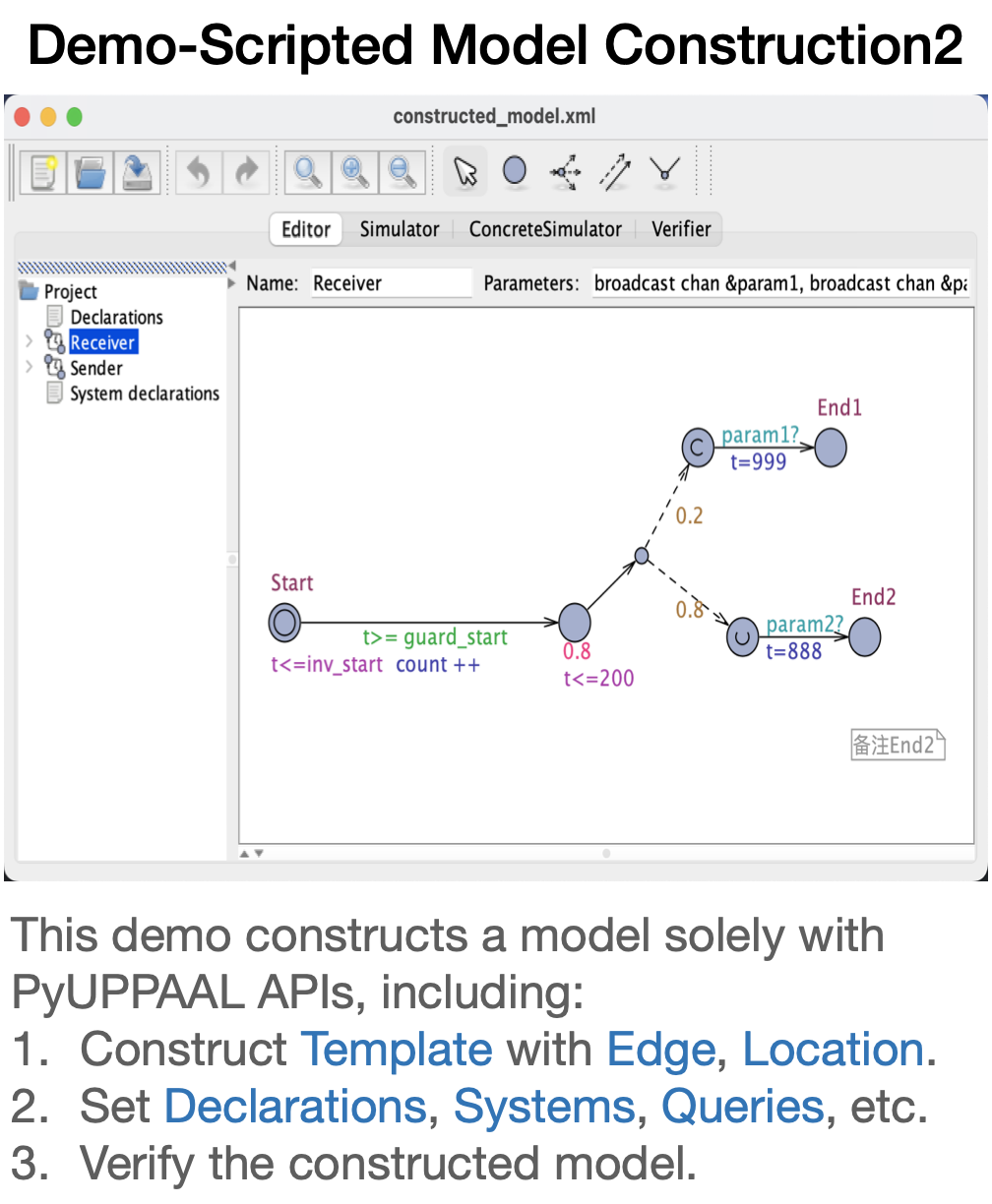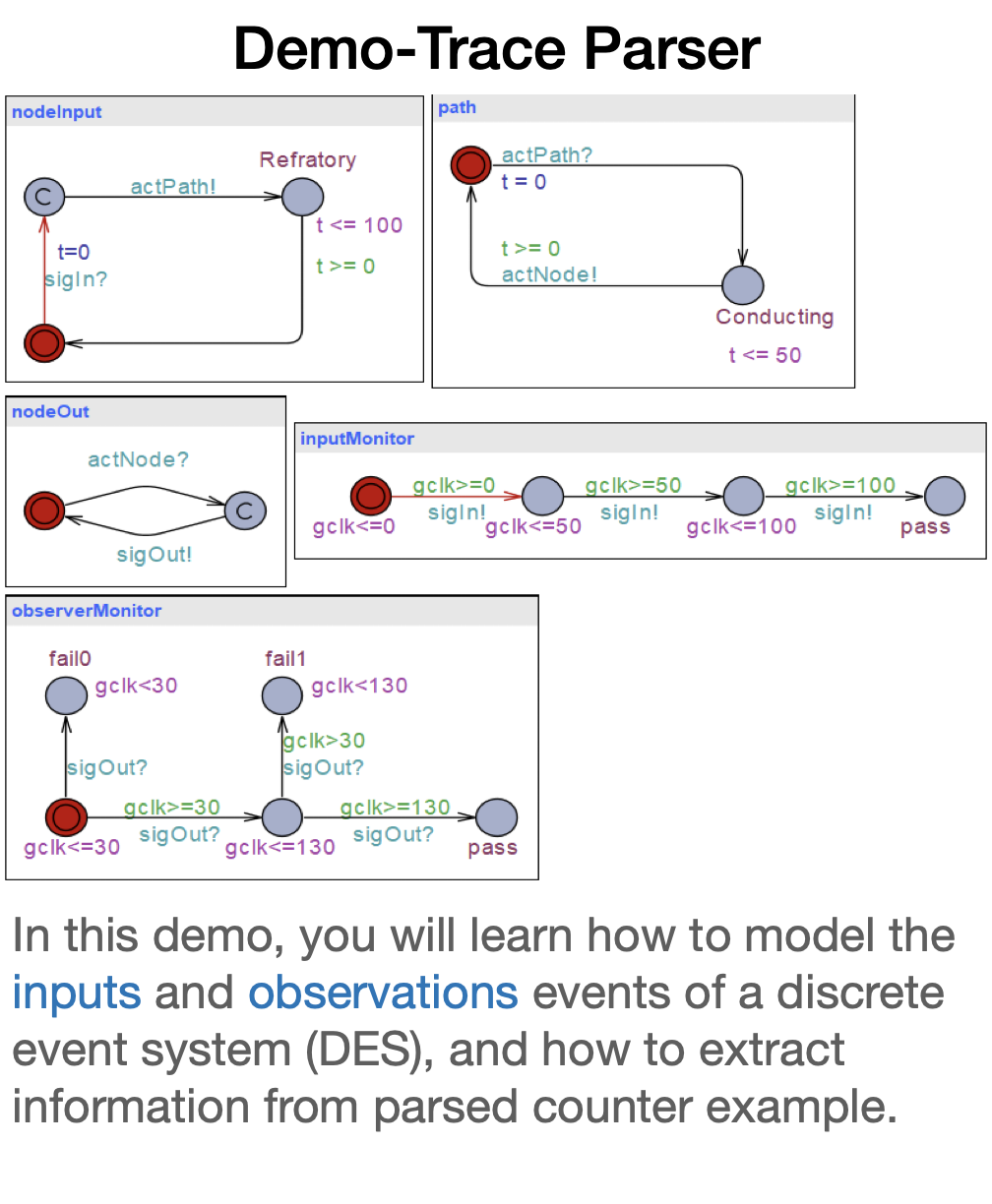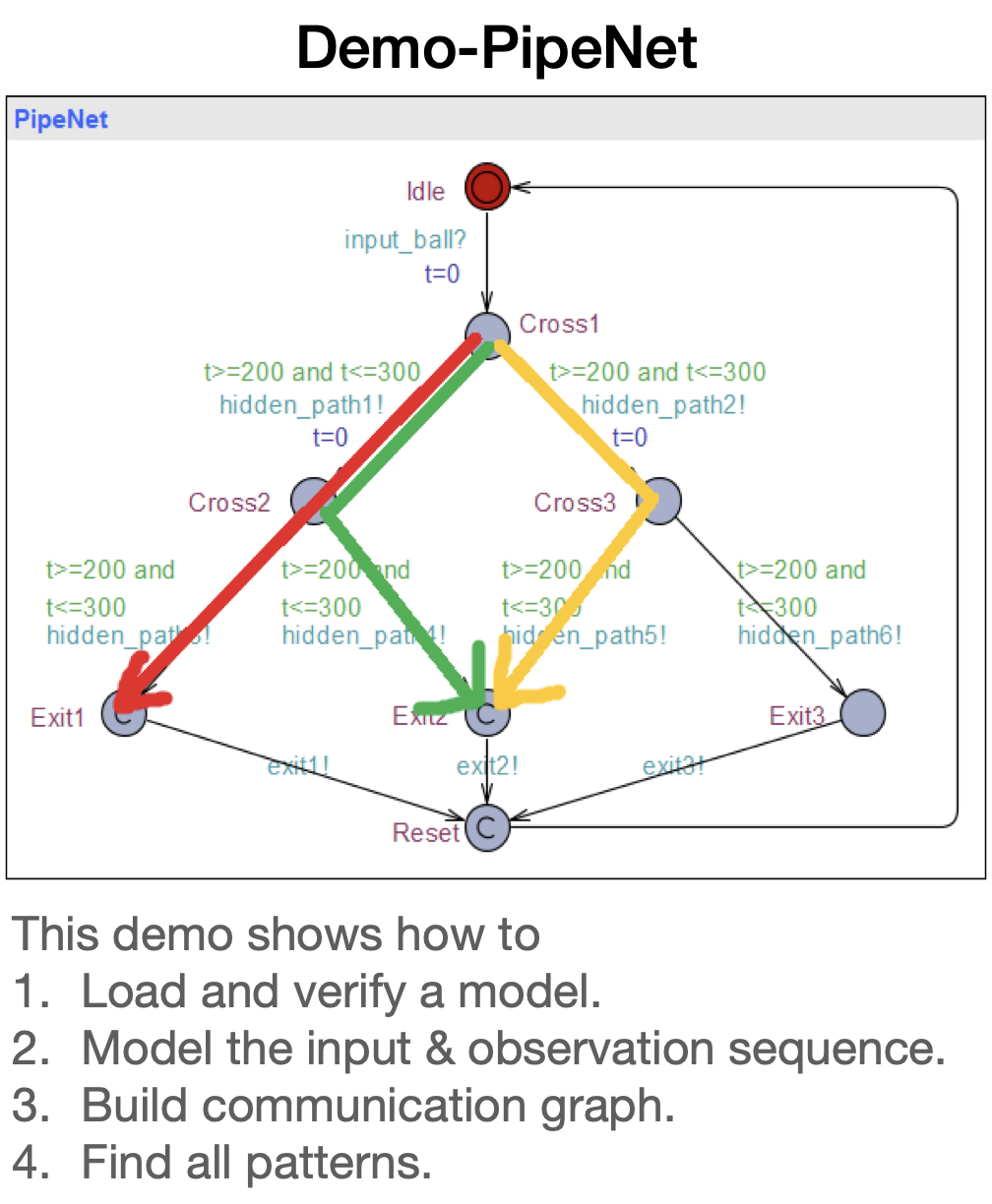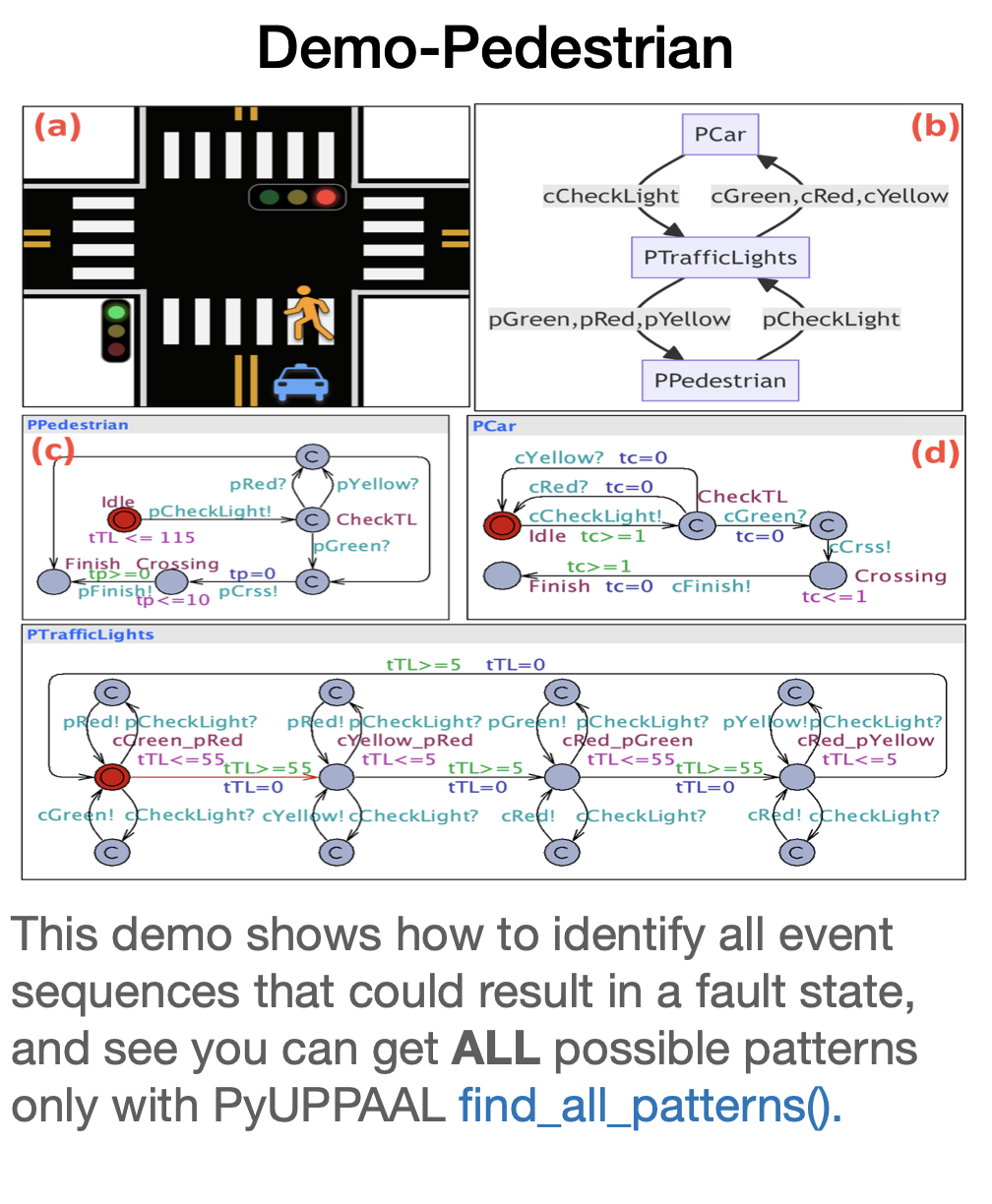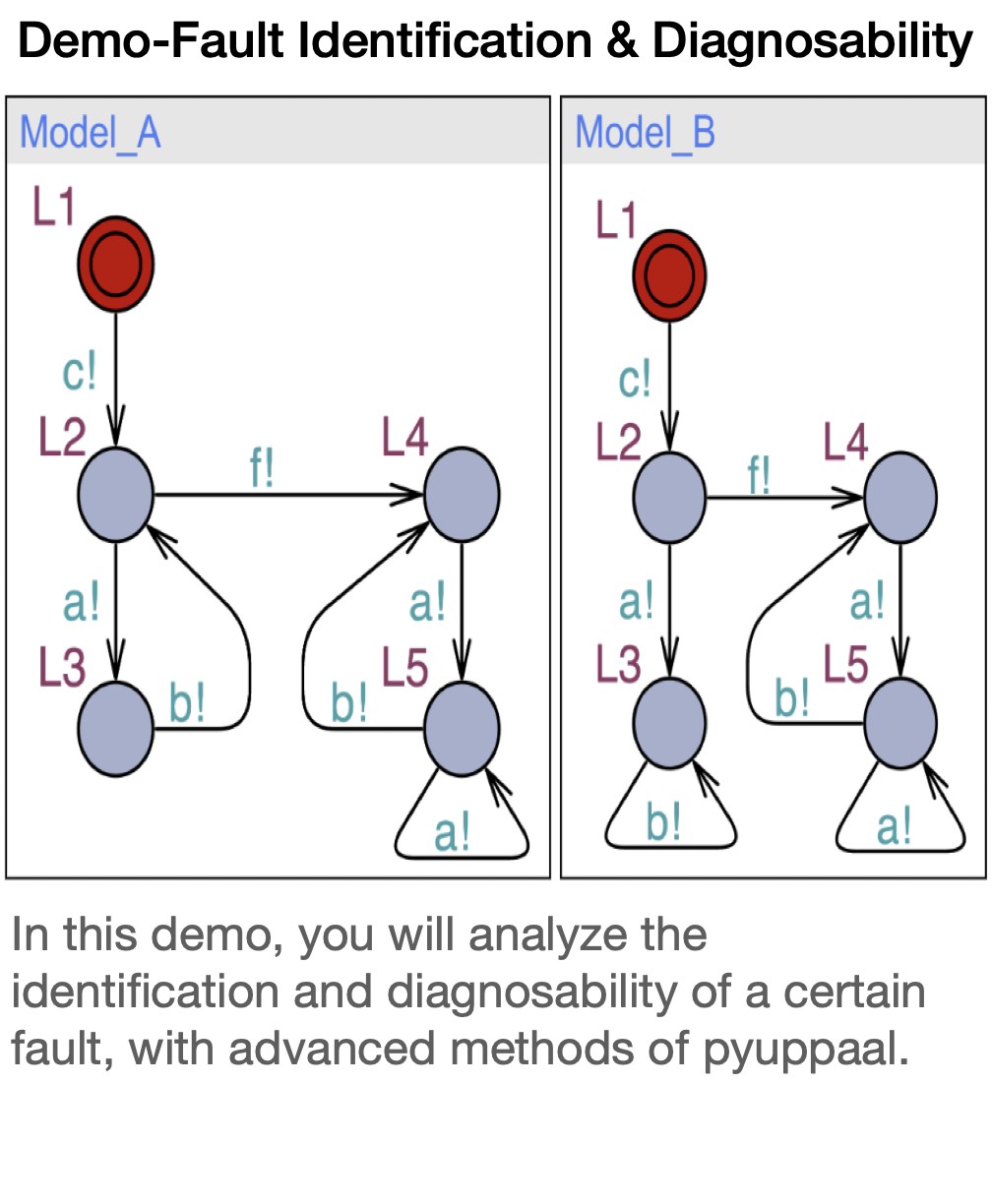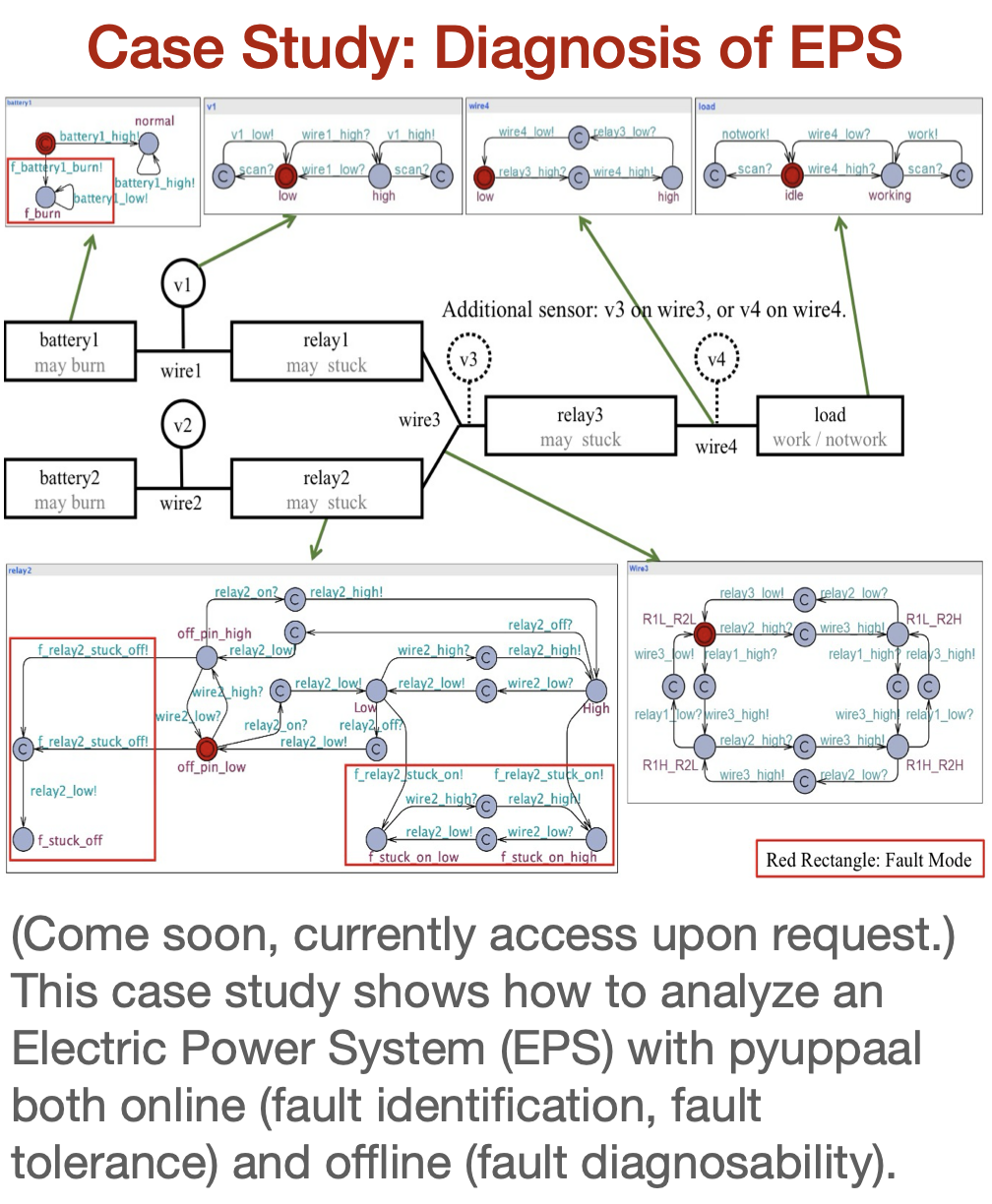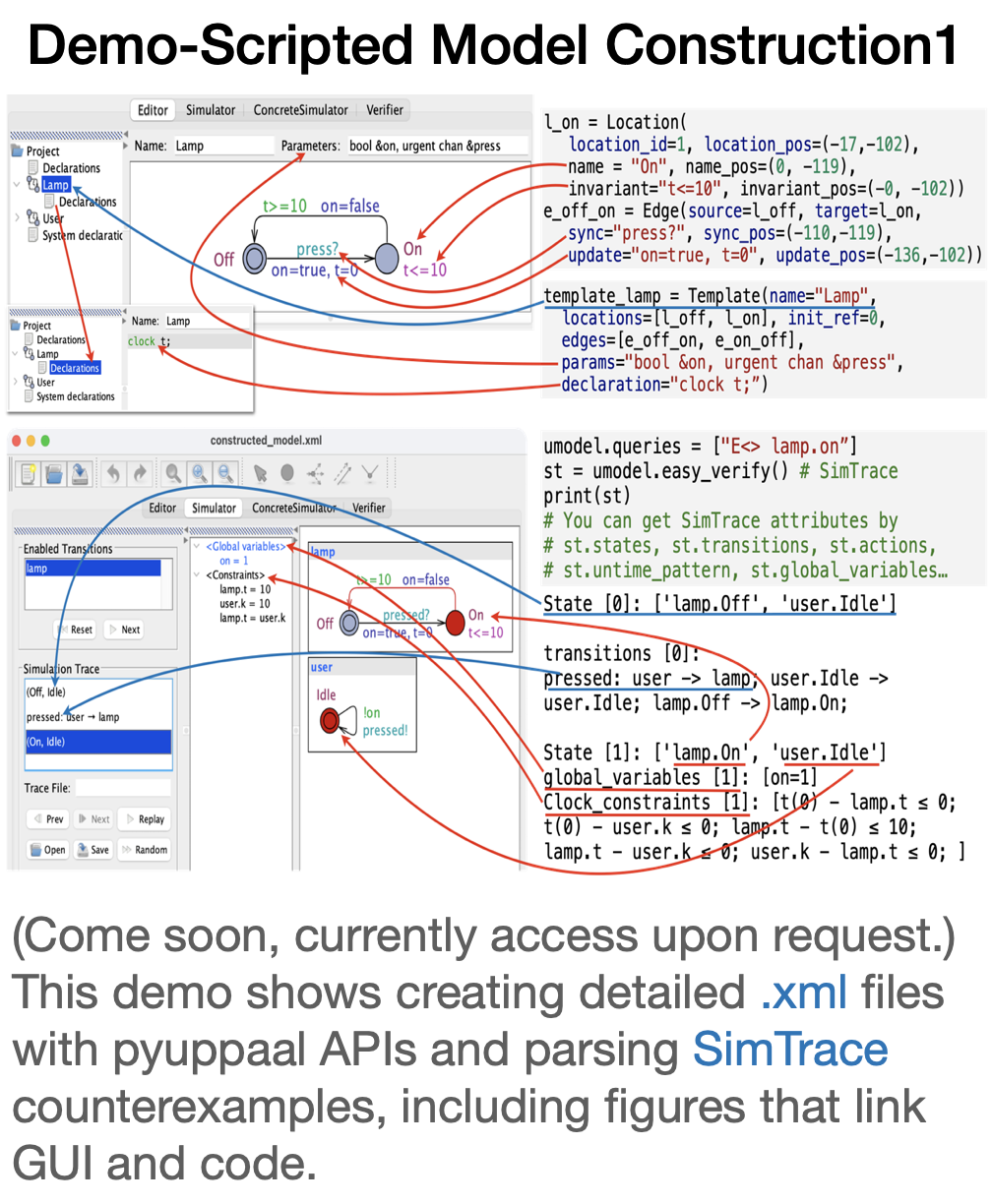https://github.com/jack0chan/pyuppaal
PyUPPAAL is a python package basically for reflecting UPPAAL's model editing, verification, and counter-example parsing operations into scripts.
https://github.com/jack0chan/pyuppaal
python3 uppaal
Last synced: 7 months ago
JSON representation
PyUPPAAL is a python package basically for reflecting UPPAAL's model editing, verification, and counter-example parsing operations into scripts.
- Host: GitHub
- URL: https://github.com/jack0chan/pyuppaal
- Owner: Jack0Chan
- License: mit
- Created: 2022-05-28T02:37:05.000Z (about 3 years ago)
- Default Branch: main
- Last Pushed: 2024-06-16T02:26:04.000Z (about 1 year ago)
- Last Synced: 2024-11-04T17:18:39.459Z (8 months ago)
- Topics: python3, uppaal
- Language: Python
- Homepage:
- Size: 39.9 MB
- Stars: 32
- Watchers: 2
- Forks: 4
- Open Issues: 5
-
Metadata Files:
- Readme: README.md
- License: LICENSE
Awesome Lists containing this project
README
# Introduction
[](https://pyuppaal.readthedocs.io/en/latest/?badge=latest)
[](https://badge.fury.io/py/pyuppaal)

[](https://opensource.org/licenses/mit-license.php)

`PyUPPAAL` is a python package developed basically for reflecting UPPAAL's model editing, verification, and counter-example parsing operations into scripts. Implementing iterative model checking workflow is a typical application of pyuppaal, such as CEGAR, CEGIS, fault diagnosis, risk analysis, ect. We will add references and case studies for these problems. Some function have been implemented such as `find_all_patterns()`, `fault_diagnosability()`, `fault_identification()`, and `fault_tolerance()`.
Notice:
- report issues / requirements at: [github-issues](https://github.com/Jack0Chan/PyUPPAAL/issues).
- more demos for basic & advanced usage will come soon.
- [todo] Support for *SMC* analyzing.
Demos are provided to help users get familiar with `PyUPPAAL`:
# Quickstart
## 1. Installation
`pip install pyuppaal`
## 2. Before Coding
1. Be sure to set the `verifyta_path` in your first line of code, which serves as model checking engine: [Download UPPAAL4.x/5.x](https://uppaal.org/downloads/).
2. You should activate UPPAAL, e.g., verify a model with UPPAAL GUI before use pyuppaal, to make sure that you have UPPAAL backend actiavted.
`pyuppaal.set_verifyta_path("your/path/to//verifyta.exe")`
## 3. Load, Edit, and Verify a Model
1. Firstly we load the model [demo.xml](https://github.com/Jack0Chan/PyUPPAAL/blob/main/src/test_demos/demo.xml) shown below.
2. Then you can verify, and return the verify results as terminal outputs, or parsed SimTrace.
3. In this demo, we just edit the `queries` of the `.xml` model, and we also provide a demo showing how to edit the template, locations, edges, etc.: [Demo-Scripted Model Construction](https://github.com/Jack0Chan/PyUPPAAL/blob/main/src/test_demos/Demo4-Scripted%20Model%20Construction.ipynb).

```python
import pyuppaal
from pyuppaal import UModel
print(f"pyuppaal version: {pyuppaal.__version__}\n")
pyuppaal.set_verifyta_path(r"C:\Users\10262\Documents\GitHub\cav2024\bin\uppaal64-4.1.26\bin-Windows\verifyta.exe")
umodel = UModel('demo.xml') # load the model
umodel.queries = ['E<> P1.pass']
# verify and return the terminal result.
print(f"======== terminal res ========\n{umodel.verify()}")
# verify and return the parsed trace as simulation trace: SimTrace.
simulation_trace = umodel.easy_verify()
print("======== parsed res ========")
print(f"untime pattern: {simulation_trace.untime_pattern}")
print(f"full trace: {simulation_trace}")
```
pyuppaal version: 1.2.1
======== terminal res ========
Writing example trace to demo-1.xtr
Options for the verification:
Generating shortest trace
Search order is breadth first
Using conservative space optimisation
Seed is 1713425560
State space representation uses minimal constraint systems
[2K
Verifying formula 1 at /nta/queries/query[1]/formula
[2K -- Formula is satisfied.
======== parsed res ========
untime pattern: ['a', 'b']
full trace: State [0]: ['P1.start']
global_variables [0]: None
Clock_constraints [0]: [t(0) - P1.t ≤ 0; P1.t - t(0) ≤ 10; ]
transitions [0]: a: P1 -> ; P1.start -> P1._id2;
-----------------------------------
State [1]: ['P1._id2']
global_variables [1]: None
Clock_constraints [1]: [t(0) - P1.t ≤ -10; ]
transitions [1]: b: P1 -> ; P1._id2 -> P1.pass;
-----------------------------------
State [2]: ['P1.pass']
global_variables [2]: None
Clock_constraints [2]: [t(0) - P1.t ≤ -10; ]
## 4. Find all patterns
Now we want find all possible patterns that leads to `P1.pass`. The red line is pattern1, and the green line is pattern2.
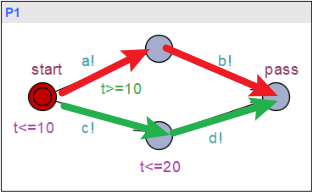
```python
for i, st in enumerate(umodel.find_all_patterns()):
print(f'pattern{i+1}: ', st.untime_pattern)
```
pattern1: ['a', 'b']
pattern2: ['c', 'd']
## 4. Verify with Multi-threads
```python
import pyuppaal as pyu
import time
import multiprocessing.dummy as mp
print(pyu.__version__)
# set verifyta path
pyu.set_verifyta_path(r"C:\Users\10262\Documents\GitHub\cav2024\bin\uppaal64-4.1.26\bin-Windows\verifyta.exe")
model_path_list = ['demo.xml', 'demo_new.xml'] * 100
trace_path_list = ['demo_trace.xtr', 'demo_new_grace.xtr'] * 100
# for loop
t0 = time.time()
for model, trace in zip(model_path_list, trace_path_list):
pyu.Verifyta().verify(model_path=model, trace_path=trace)
print(f'Verify with for loop, time usage {time.time() - t0}')
# multi-threads
t0 = time.time()
# pyu.Verifytaeasy_verify(model_path=model_path_list, trace_path=trace_path_list, num_threads=20)
p = mp.Pool()
p.starmap(pyu.Verifyta().verify, zip(model_path_list, trace_path_list))
print(f'Verify with multi-threads, time usage {time.time() - t0}')
```
1.2.1
Verify with for loop, time usage 9.384526014328003
Verify with multi-threads, time usage 1.61281418800354
## 5. Get Communication Graph
For models with multiple processes, you can use `umod.get_communication_graph()` method to visualize the sturcture of your UPPAAL model.
An example communication graph of a complex model in [Demo_PipeNet](https://pyuppaal.readthedocs.io/en/latest/Demo1-PipeNet.html#visualize-the-architecture) is shown below:
[](https://mermaid.live/edit#pako:eNpVjs0KwjAQhF-l7Lk56DEHT714UUGPC7JttjaQpCHdiFL67kYo_pxmmG8GZoZuNAwaboniUF0aDCcb-cCCYR9iLnJsJ053TmuglH3LtSXnlNp92qtRih9WtoV8d39o84OgBs_JkzXlwYyhqhBkYM8IuljDPWUnCBiWUqUs4_kZOtCSMteQoyHhxlL57kH35CZeXq-ESg8)
## 6. Backup of old docs
Demos are provided to help users get familiar with `PyUPPAAL` (can not be rendered by github):
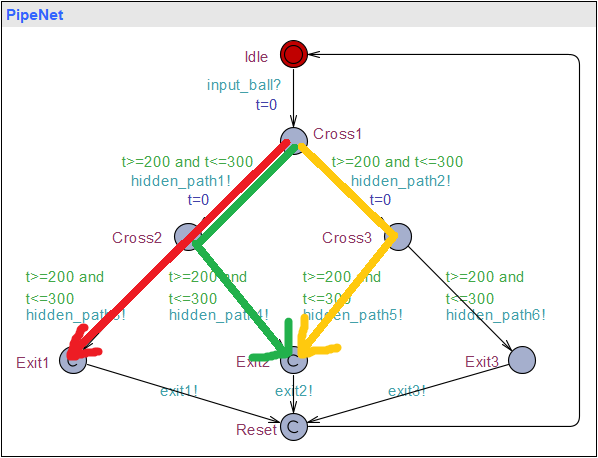
Demo-PipeNet
This demo demonstrates how to
- Load and verify a model.
- Model the input & observation sequence.
- Build communication graph.
- Find all patterns.
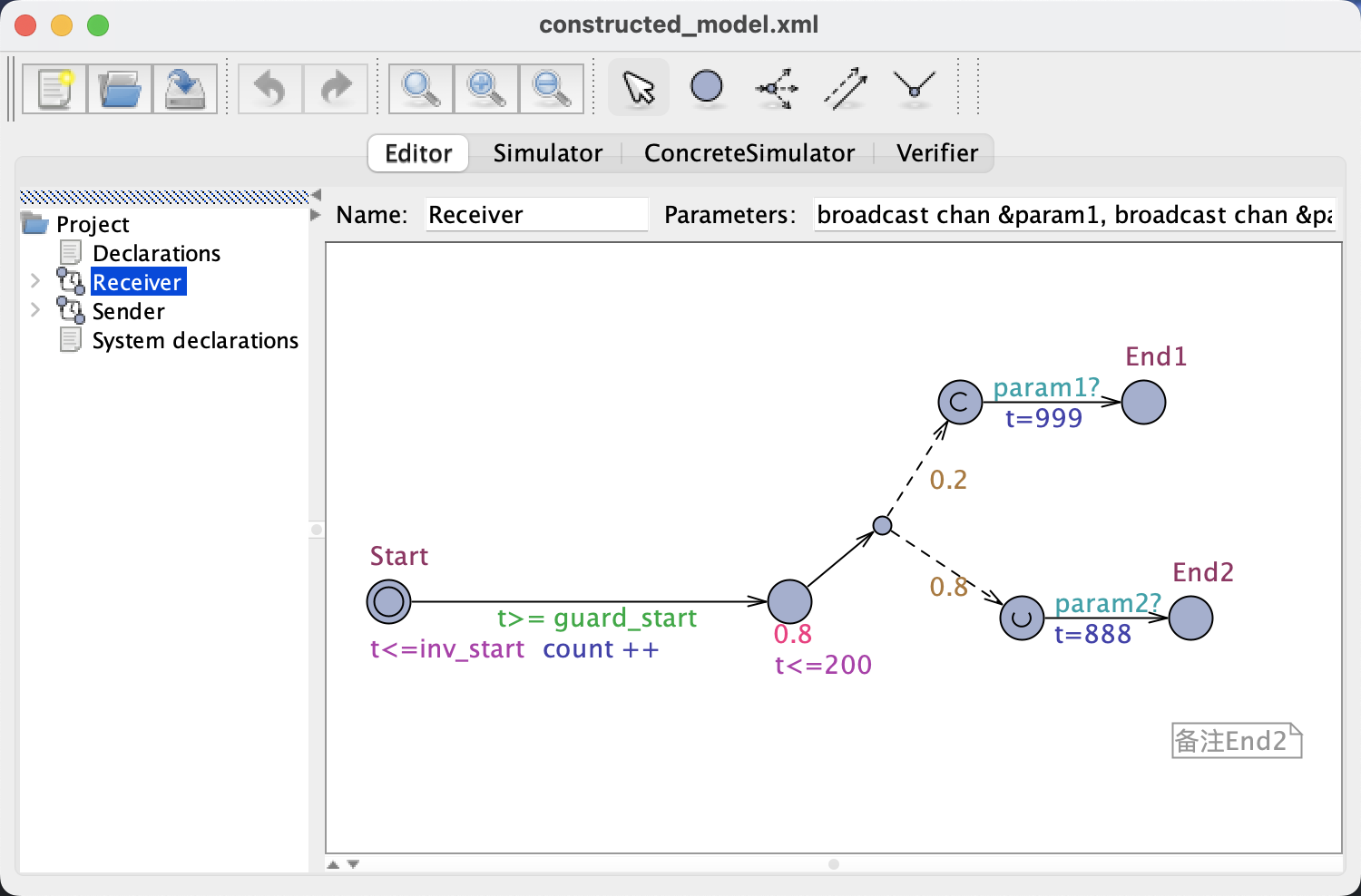
Demo-Scripted Model Construction
This demo constructs a model solely with PyUPPAAL APIs, including:
- Construct
Template with Edge, Location.
- Set
Declarations, Systems, Queries.
- Verify the constructed model.
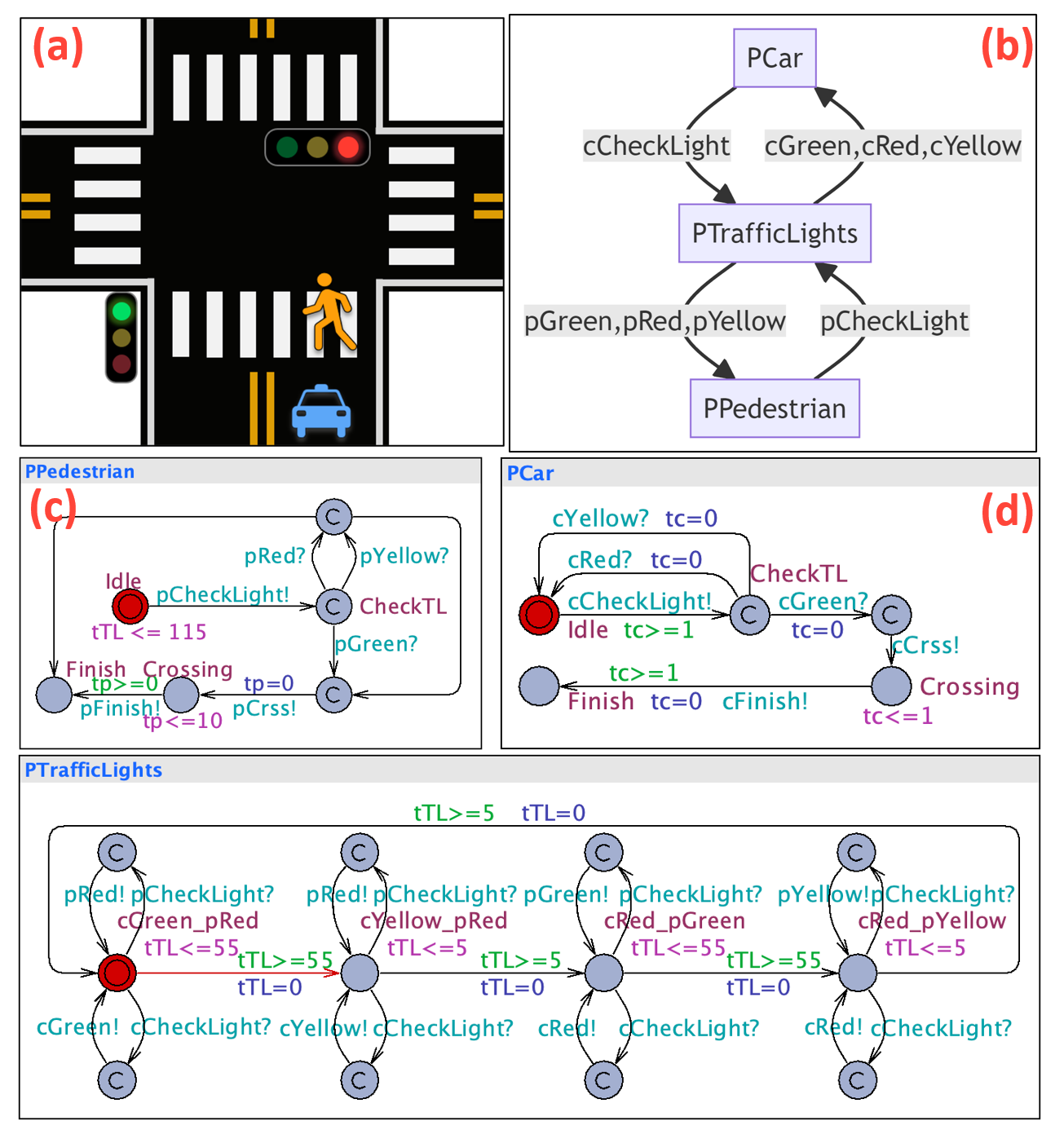
Demo-Pedestrain
This demo shows how to identify all event sequences that could result in a fault state, and see you can get ALL possible patterns only with PyUPPAAL find_all_patterns().
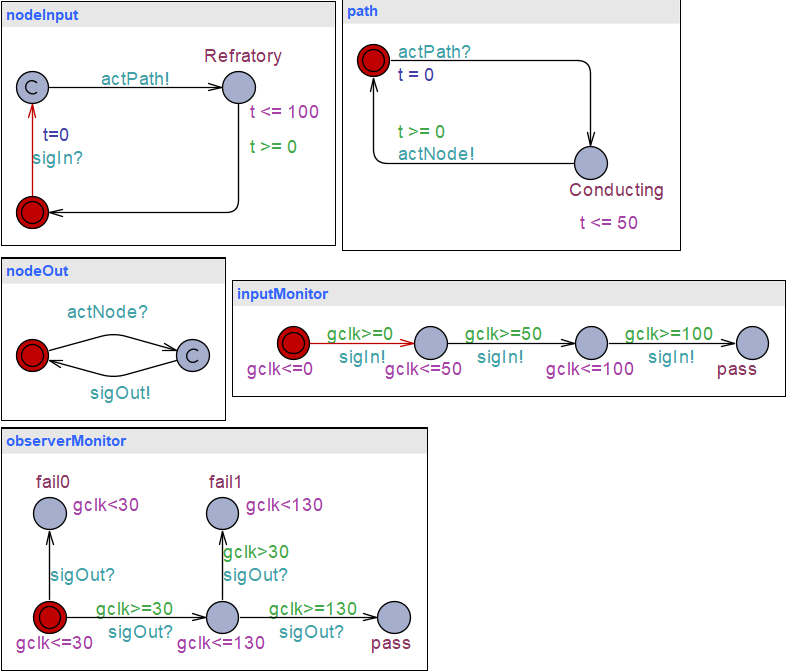
Demo-Trace Parser
In this demo, you will learn how to model the input and observations events of a descrete event system (DES), and how to extract information from parsed counter example.
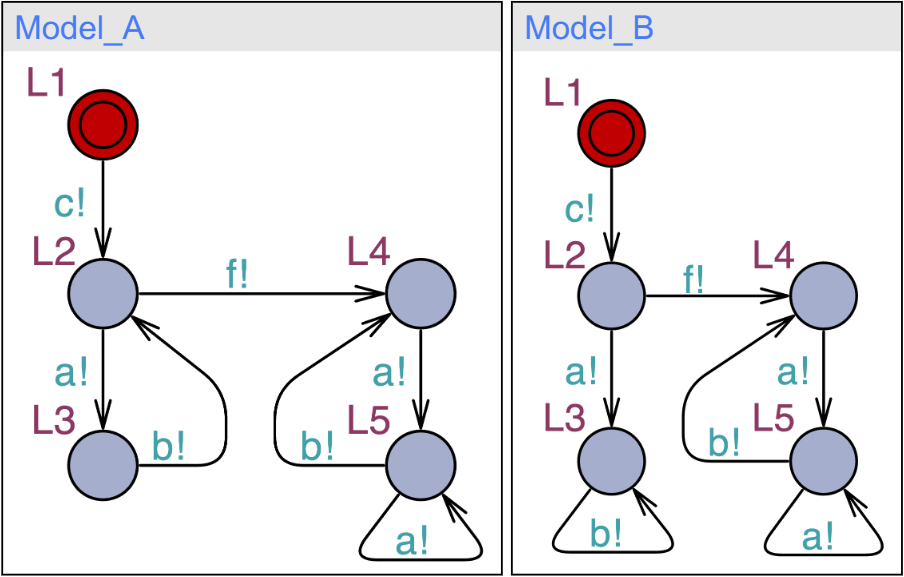
Demo-Fault Identification and Diagnosability
In this demo, you will analyze the identification and diagnosability of certain fault, wich advanced methods of pyuppaal.
